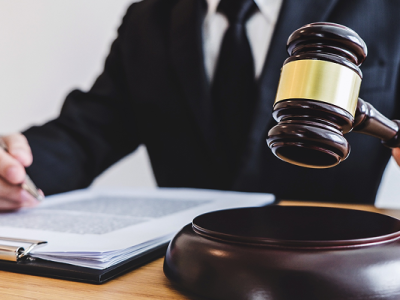
Ever hear the term judicial restraint and think, “Wait, what does that even mean?” You’re not alone. It may sound fancy, but it’s actually quite simple. It’s about judges knowing when not to flex their power.
Interestingly, in a world where everyone is rushing to make decisions, restraint feels old-school. But maybe that’s the point. Probably, courts shouldn’t intervene in every dispute. Also, letting lawmakers do their job is part of the deal.
Therefore, read on to get a better idea of what judicial restraint means. Moreover, you will also know why it matters and how it shapes the justice system of the United States.
What Is Judicial Restraint? (And Why Should You Care?)
So, first things first: what is judicial restraint?
Simply put, it’s when judges hold back. They avoid striking down laws unless necessary. Then, they defer to elected officials, including Congress, state legislatures, and others. After that, they say: “Let democracy do its thing.”
Primarily, the definition of judicial restraint isn’t complicated. Rather, it’s about respecting boundaries. This is because judges aren’t lawmakers. They interpret laws, not create them. This is the fundamental concept that everyone must grasp.
Of course, it is controversial. While some people love it, others don’t.
Where Did the Idea of Judicial Restraint Come From?
Flashback to the early 20th century. Justice Oliver Wendell Holmes and Justice Felix Frankfurter were big on restraint. This is because they believed courts shouldn’t be political battlegrounds.
Fast forward to today, and this debate still rages on. Think Roe v. Wade, Dobbs, Citizens United, and more. In fact, every time the Supreme Court makes a big move, someone asks: “Should they have stayed out of it?” That’s judicial restraint in the spotlight.
Judicial Restraint vs. Judicial Activism: The Eternal Tug-of-War!
Both Judicial Restraint and Judicial Activism are like oil and water.
- Judicial activism says: “Courts should lead social change.”
- Judicial restraint says: “Courts should lay back unless the Constitution demands action.”
Neither Judicial Restraint nor Judicial Activism is “wrong.” However, they clash big time. This is because activists seek progress, while restrainers desire stability. Hence, it is a philosophical divide (not just legal).
Moreover, this debate shows up in everything from abortion rights to gun laws to voting access.
Judicial Restraint in Government: A Balancing Act!

This is where things get tricky. The judicial restraint definition that government executives use isn’t just about courts. Rather, it is about power. Also, it is about ensuring checks and balances. In fact, this is the idea that no branch (not even the judiciary) should dominate.
In theory, restraint keeps judges humble. Apart from that, it keeps democracy intact and keeps the people in charge.
However, things get complicated in practice. Sometimes, restraint means letting bad laws remain in place. In some cases, it means ignoring injustice. That’s the dark side.
Is Judicial Restraint Always a Good Thing?
The short answer is that Judicial Restraint is not so good. However, if you want the long answer, we would say that it depends.
Let’s say a state passes a law that clearly violates civil rights. Hence, the questions arise: should courts intervene? Most people would say yes. However, a strict restrainer might say, “Let the legislature fix it.”
This is the tension that comes to the fore. In fact, restraint can protect democracy or even paralyze it.
Judicial Restraint in Action: Some Landmark Cases
The following are some of the major cases about Judicial Restraint that you must know about:
- Plessy v. Ferguson (1896): It is about a restraint gone wrong. In this case, the Court upheld segregation. Oof.
- Brown v. Board of Education (1954): This case exemplifies activism at its finest. In this case, the Court stepped in and changed history.
- NFIB v. Sebelius (2012): It is about restraint again. The Court upheld Obamacare, but tiptoed around broader issues.
Now, did you see the pattern? It shows that restraint isn’t passive. Rather, it is a strategic thing.
What’s the Point of All This?
To be honest, the point of Judicial Restraint is to get you thinking. Basically, judicial restraint is not just a legal theory. Rather, it is a lens through which to view power, responsibility, and the role of courts in society.
In addition to that, it is about knowing when not to act. However, that’s hard, especially in a world that demands instant justice.
Why Judicial Restraint Is Important for Society?
So why does judicial restraint even matter? Of course, it is a big deal for many.
Well, think about it. Judges aren’t elected, they don’t campaign, and they don’t answer to voters. Hence, their role is interesting. So, when they start making huge decisions (like rewriting laws and overturning policies), it might feel off. That’s where restraint comes in.
Moreover, it is like a built-in brake system. In fact, it is a way for courts to say, “Hold up. Let’s not overstep.” It keeps power balanced. Apart from that, it keeps judges from becoming lawmakers in robes.
Of course, it can be frustrating at times. Like when a bad law sticks around because the court won’t touch it. However, the idea is bigger than one case. In addition to that, it is about respecting democracy and letting the people, through their representatives, shape the rules.
Without judicial restraint, courts could become super-legislatures. That is a risky thing. Obviously, that’s not how the system’s supposed to work.
Hence, restraint isn’t flashy or dramatic. Rather, it’s important, and a quiet strength. In fact, it is knowing when not to act, and that’s harder than it sounds.
Why Judicial Restraint Still Matters?
In an era when courts are under scrutiny (from both sides), judicial restraint offers a sense of calm. In fact, it is a reminder that not every battle belongs in a courtroom.
Of course, it is not perfect and always fair. However, it is still part of the system. Apart from that, sometimes, restraint is the bravest move a judge can make.
So next time you hear about a big Supreme Court case, ask yourself: Should they act? Or should they hold back? That’s the heart of it.


